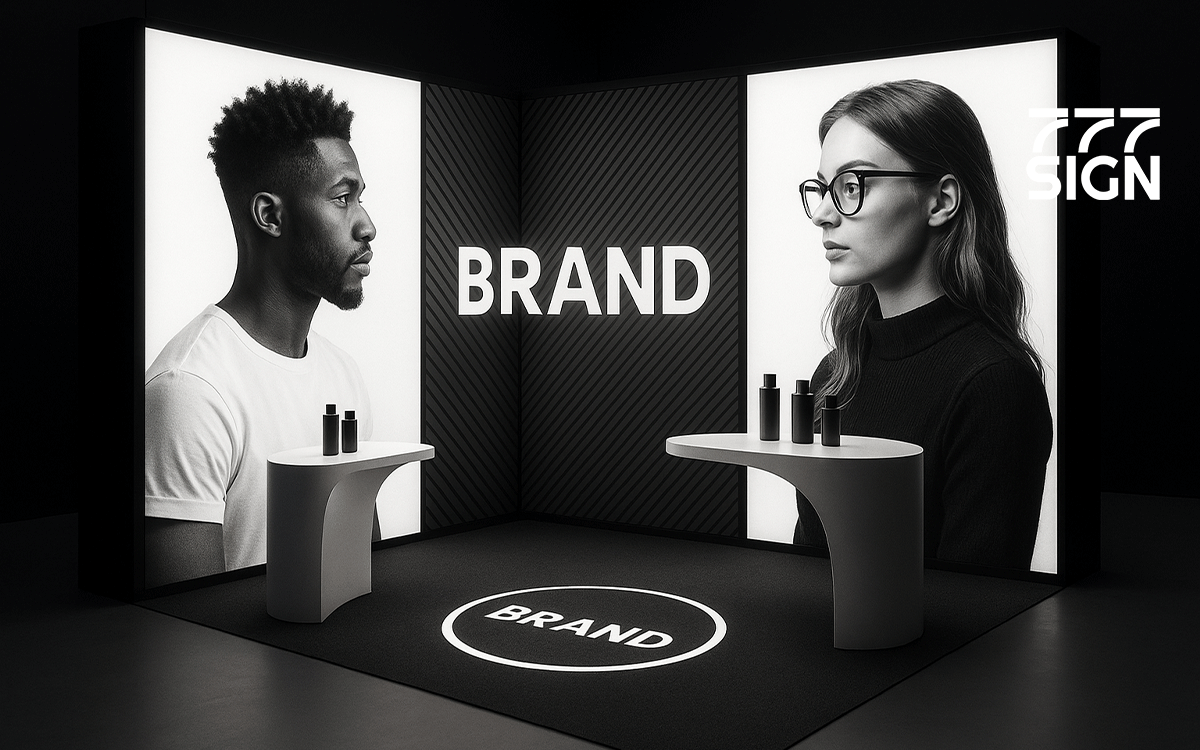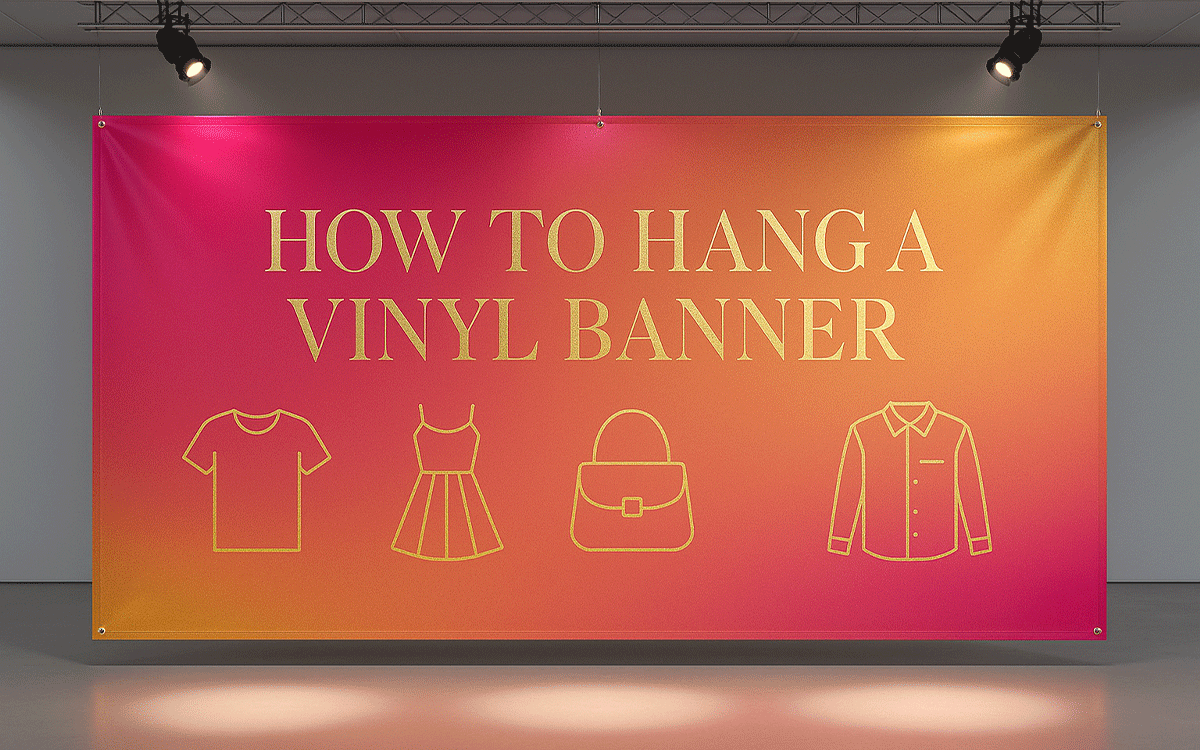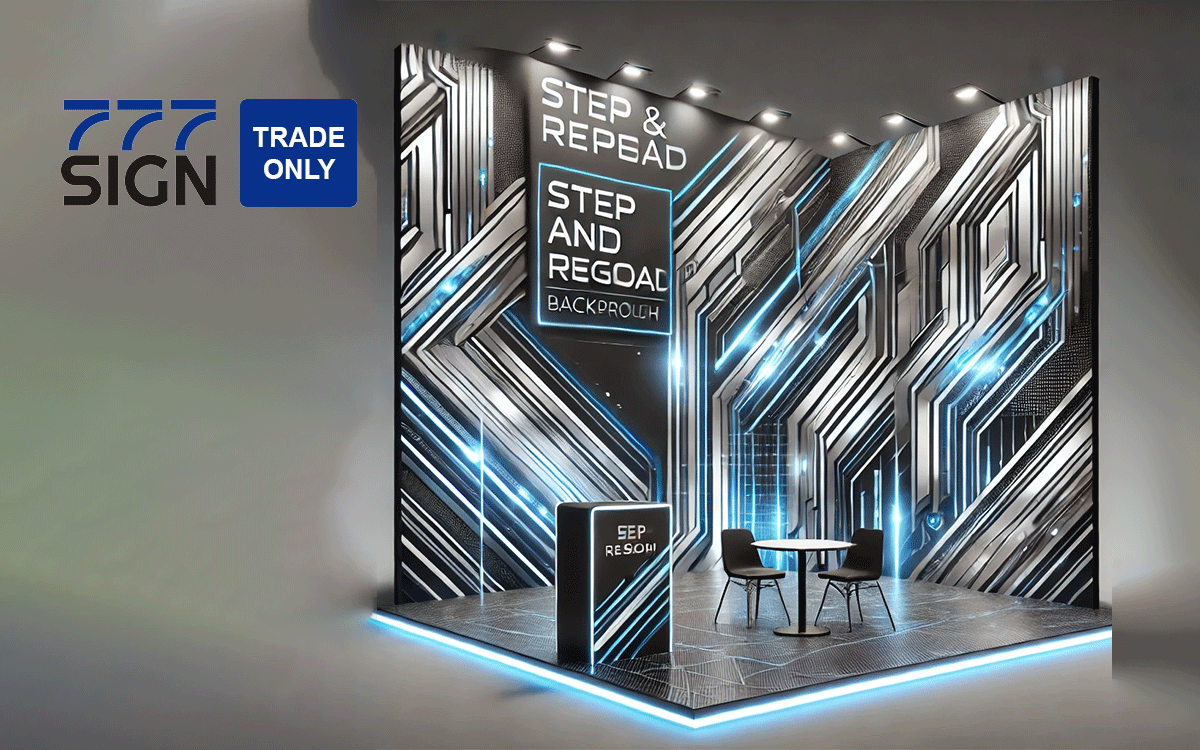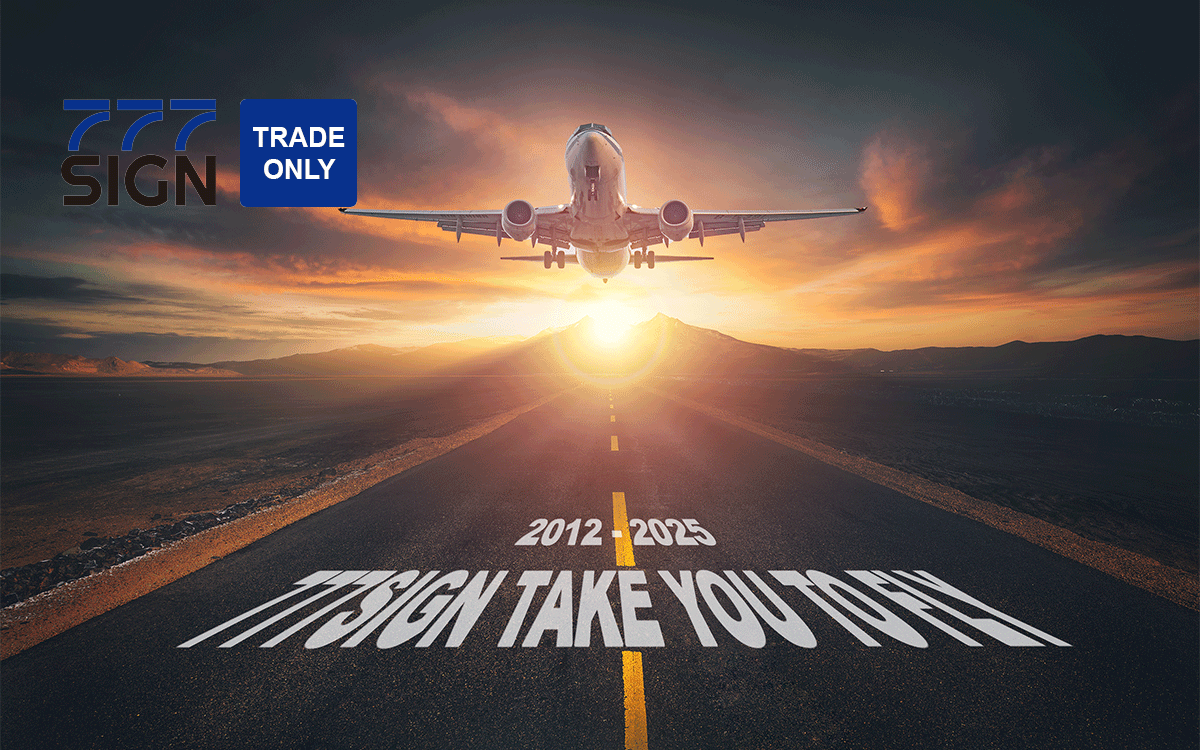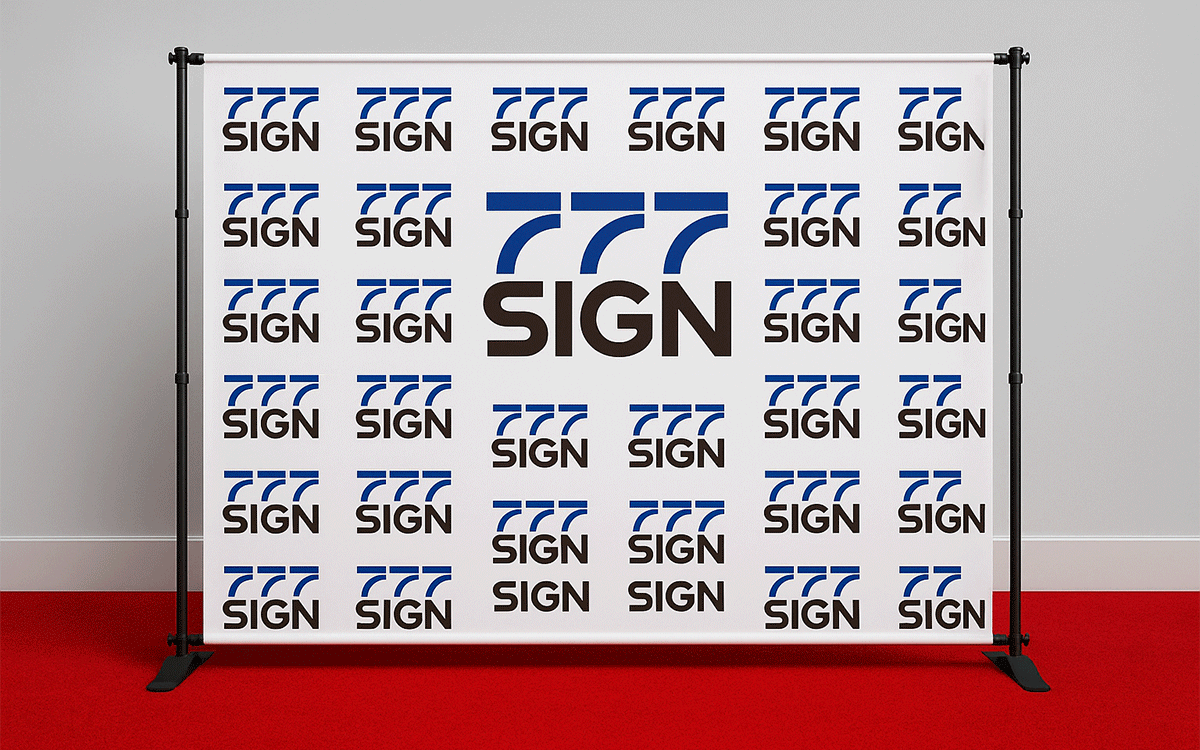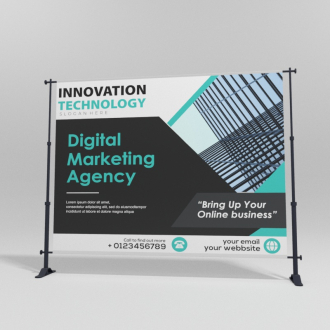Elevate Your Event: How a Step and Repeat Backdrop Stand Can Transform Your Brand's Visibility
In the dynamic landscape of event marketing, few tools can transform a gathering into a memorable brand experience like a step and repeat banner. Whether you're organizing a red-carpet gala, a corporate conference, or a product launch, this unassuming yet impactful marketing asset can elevate your event and significantly enhance your brand's visibility. This comprehensive guide delves into step and repeat banners, exploring their definition, purpose, design intricacies, and best practices to help you make the most of this powerful branding tool.
What is a Step and Repeat?
Definition and Purpose
A step and repeat, also commonly referred to as a step and repeat banner or a backdrop, is a custom-printed display featuring a repeated pattern of a brand's logo, slogan, or other visual elements. The term "step and repeat "originates from attendees "stepping "into the frame and having their photo taken in front of the backdrop, with the repeated design creating a cohesive and visually striking background.
The primary purpose of a step and repeat is to create a designated photo opportunity that serves as a focal point for an event. Providing a professional and branded backdrop encourages attendees to take photos, generate organic social media content, and extend the reach of your event and brand. Beyond just a photo backdrop, a step and repeat acts as a powerful branding tool, reinforcing your brand identity and message in a subtle yet impactful way.
Importance in Brand Visibility
In today's digital age, where social media plays a pivotal role in event coverage, a step and repeat banner offers unparalleled opportunities for brand visibility. When attendees share photos taken in front of the backdrop on platforms like Instagram, Twitter, and Facebook, your brand logo and message are exposed to their followers, creating a ripple effect of brand awareness.
Moreover, a well-designed step and repeat can help establish your brand's professional and polished image. It adds a touch of sophistication to any event, making it feel more high-profile and memorable. Whether it's a small business event or a large-scale conference, the presence of a step and repeat signals attendees that you've put thought and effort into creating a cohesive brand experience.
The Anatomy of a Step and Repeat Banner
Common Dimensions and Sizes
Understanding the dimensions and sizes of a step and repeat banner is crucial to ensuring it fits seamlessly into your event space and serves its purpose effectively. The most common dimensions for a step and repeat banner depend on the event type and the expected attendees. A backdrop size of 8 feet wide by 8 feet tall for smaller events or intimate gatherings is often sufficient. It provides enough space for one or two people to stand in front of the backdrop comfortably.
A wider backdrop may be necessary for larger events or those expecting a high volume of photo opportunities. Dimensions 10 feet wide by 8 feet tall or 12 feet wide by 8 feet tall are not uncommon. It's important to consider the venue space when selecting your step size and repeat. You'll want to ensure that the backdrop is large enough to be visible and impactful but not so large that it overwhelms the space or looks out of place.
Additionally, the height of the backdrop is an important consideration. An 8-foot height is standard as it provides a suitable backdrop for most adults and ensures that the repeated design is visible from head to toe in photos. However, if your event has a mix of adults and children or has specific height requirements, you may need to adjust the height accordingly.
Design Elements: Logos, Colors, and Text
The design of your step and repeat banner allows you to showcase your brand identity truly. The key design elements are your logos, brand colors, and relevant text. The logo is the centerpiece of the design, and it should be repeated in a visually appealing and cohesive pattern.
When it comes to logo placement and repetition, you can take a few different approaches. Some brands opt for a simple grid pattern, repeating the logo uniformly across the backdrop. Others prefer a more dynamic pattern, such as a diagonal repeat or a pattern that varies in size slightly to create visual interest. Whichever approach you choose, it's important to ensure the logo is clear and legible, even when repeated multiple times.
Brand colors are another critical design element. The backdrop should feature your brand's primary colors to create a cohesive and recognizable look. It helps reinforce brand identity and instantly associates the backdrop with your brand. You can use a solid-color background with the logo repeated in a contrasting color, or you can get more creative with a gradient background or a pattern that incorporates multiple brand colors.
In addition to logos and colors, include text on your step and repeat the banner. It could be a tagline, a slogan, or the name and date of the event. If including text, it's important to keep it concise and legible. The text should complement the logo and not overshadow it. Font selection is also important; it should match your brand's typography guidelines to maintain consistency.
Creating Your Step and Repeat
Step and Repeat Template Options
Creating your own step and repeat banner doesn't have to be daunting, especially with the wide range of step and repeat template options available. Many printing companies and online design platforms offer pre-designed step and repeat templates that you can customize to fit your brand. These templates provide a great starting point, especially if you're unfamiliar with graphic design.
When choosing a template, look for one that aligns with your brand's aesthetic and the style of your event. Some templates are more modern and minimalist, while others are more elaborate and decorative. You can also find templates specifically designed for events such as weddings, corporate events, or product launches.
Once you've selected a template, you can customize it by adding your logo, brand colors, and additional text. Most templates are designed to be user-friendly, allowing you to upload your logo and make color changes with just a few clicks. It makes the design process quick and easy, even for those without extensive design experience.
Using Illustrator for Custom Designs
For those who want a truly unique, custom step-and-repeat design, Adobe Illustrator is an excellent option. Illustrator is a professional graphic design software that gives you complete control over every aspect of your design, allowing you to create a one-of-a-kind backdrop that perfectly represents your brand.
To create a step and repeat design in Illustrator, start by setting up your document with the correct dimensions for your banner. Then, import your logo and begin creating the repeat pattern. You can experiment with different patterns, such as a grid, diagonal, or organic pattern, to find the one that best suits your brand.
One advantage of using Illustrator is the ability to create complex designs and effects that may not be possible with pre-made templates. You can add gradients, textures, and other design elements to make your backdrop stand out. You can also precisely control the spacing and sizing of your logo to ensure a consistent and professional look.
If you're not confident in your Illustrator skills, consider hiring a professional graphic designer to create the design for you. It ensures you'll get a high-quality, custom design that meets your specifications.
Best Practices for Step and Repeat Photography
Positioning and Lighting Tips
The positioning and lighting of your step and repeat banner are crucial to ensuring that the photos taken in front of it look professional and showcase your brand in the best possible light. When it comes to positioning, choose a location that is easily accessible and visible to attendees. Avoid placing the backdrop in a corner or an area that is difficult to find, as this may discourage people from using it.
Ideally, the backdrop should be placed in a well-lit area away from harsh shadows or direct sunlight. If the event takes place indoors, position the backdrop near a natural light source, such as a window, or use artificial lighting to ensure even illumination. When using artificial lighting, avoid placing the lights directly above the backdrop, as this can create unflattering shadows on people's faces. Instead, use softbox lights or umbrellas to create a soft, diffused light that flatters the subjects and highlights the backdrop.
If the event takes place outdoors, be mindful of the time of day and the sun's direction. Avoid placing the backdrop in direct sunlight, which can cause overexposure and washed-out photos. Instead, find a shaded area or use reflectors to bounce light onto the backdrop and the subjects.
Maximizing Social Media Opportunities
A step-and-repeat banner is not just a backdrop for photos; it's also a powerful tool for generating social media content. To maximize the social media opportunities provided by your step-and-repeat banner, encourage attendees to share their photos by creating a unique event hashtag. Display the hashtag prominently near the backdrop, along with instructions on how to use it.
You can also take things a step further by offering an incentive for sharing photos, such as a chance to win a prize. It can increase engagement and encourage more people to participate. Additionally, consider hiring a professional photographer to take photos of the backdrop and share them on your brand's social media channels. It provides high-quality content for your channels and gives attendees a reason to follow and engage with your brand.
Another way to maximize social media exposure is to feature and repeat the step in your pre- and post-event social media content. Share photos of the backdrop before the event to build anticipation, then share highlights afterward, showcasing the images taken before the backdrop. It helps extend your event's lifespan and keeps your brand in mind with your audience.
Conclusion: Transforming Events with Step and Repeat Banners
In conclusion, a step-and-repeat banner is a versatile and impactful tool that can transform any event and significantly enhance your brand's visibility. From defining what a step-and-repeat banner is to exploring its anatomy, design considerations, and best practices for step-and-repeat photography, we've covered everything you need to know to make the most of this powerful branding asset.
Investing in a well-designed step and repeat banner creates a designated space for attendees to engage with your brand and generate organic social media content. It increases brand awareness and helps establish a professional and polished image for your brand. Whether you're organizing a small business event or a large-scale conference, a step-and-repeat banner is a worthwhile investment that can yield significant returns regarding brand visibility and engagement.
So, the next time you plan an event, don't overlook the power of a step and repeat the banner. With the right design, positioning, and lighting, you can create a memorable brand experience that attendees will be eager to share with their social networks, ultimately transforming your event into a powerful marketing opportunity for your brand.
Remember, the key to success with a step-and-repeat banner is to keep your brand identity front and center in every aspect of its design and implementation. By doing so, you'll elevate your event, leave a lasting impression on attendees, and extend your brand's reach far beyond the confines of the event itself.
Are you ready to take your next event to the next level and transform your brand's visibility? Start planning your steps and repeating the banner today, and see the difference it can make for your brand.



